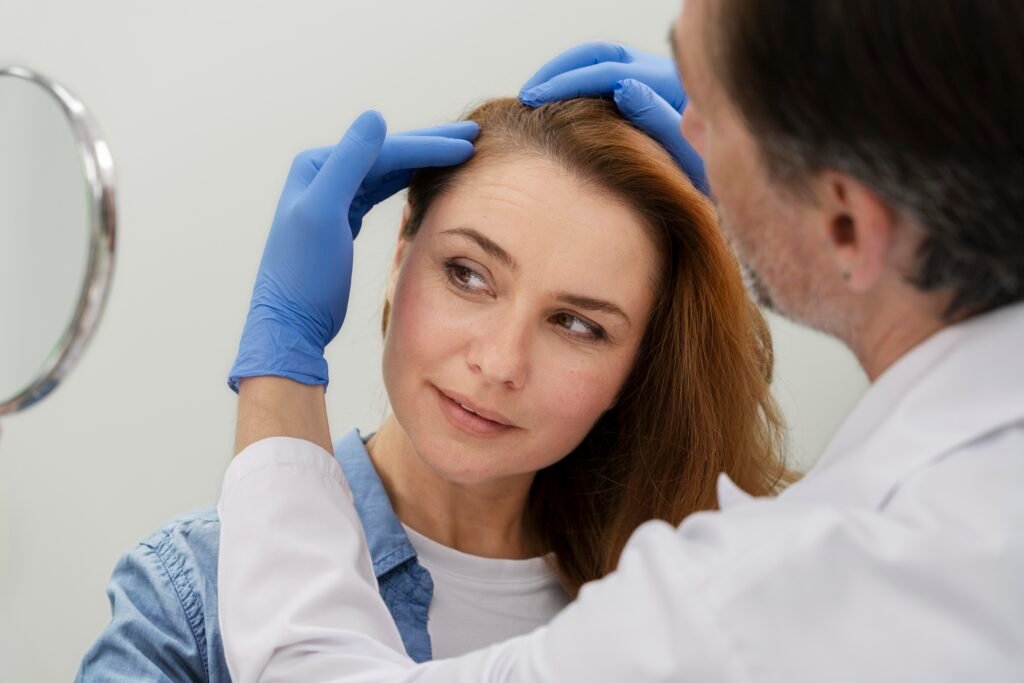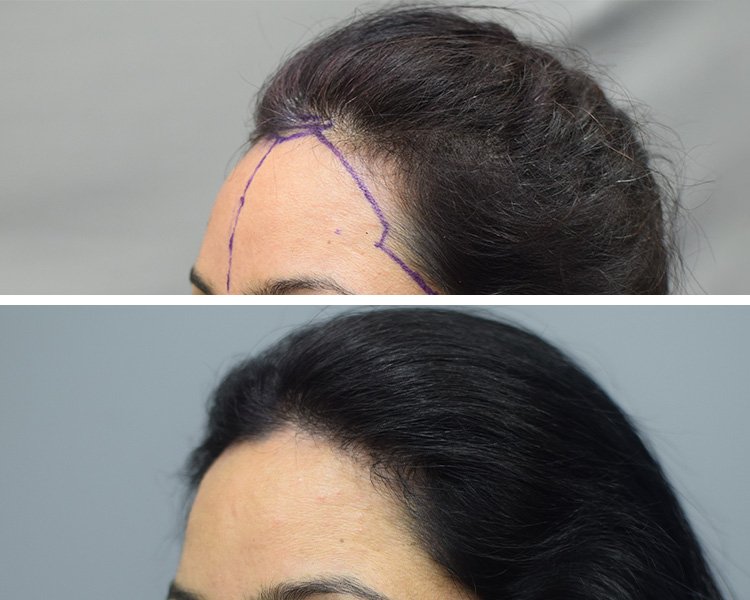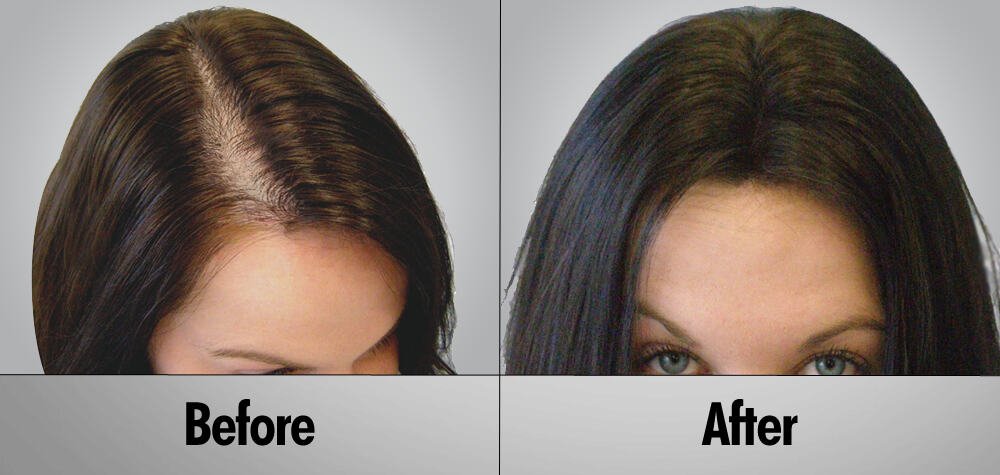Female Hair Transplant
Female hair transplant is a revolutionary solution for women experiencing thinning hair or hair loss. This advanced procedure focuses on restoring hair by relocating healthy follicles from donor areas to the thinning or balding spots on the scalp. With cutting-edge techniques and a personalized approach, female hair transplants offer natural-looking results, helping women regain their confidence and achieve a fuller, more vibrant head of hair.

Understanding Female Hair Loss
Understanding Female Hair Loss
Hair loss in women can result from various factors, including:
- Genetics: Female pattern baldness or androgenetic alopecia is by far the most typical reason behind hair loss situations in females.
- Hormonal Changes: Some of the observable causes of hair loss include; Pregnancy, Menopause, and thyroid problems, among others.
- Medical Conditions: Some of the conditions that make hair fall include; Alopecia areata, scalp infections, or conditions that require the use of certain medications.
- Lifestyle Factors: Hormonal changes, stress, diet, hair styling, and treatments are other causes of hair thinning.
Who is a Candidate for Female Hair Transplant?
Not every woman experiencing hair loss is a suitable candidate for a hair transplant. Ideal candidates typically:
- Experience low fluctuations in hair loss.
- Have adequate donor hair on the scalp available.
- Have no major or terminal health issues.
- Try to avoid high expectations with specific regard to the outcome.
Consulting with a qualified hair transplant specialist is crucial to determine if you’re a suitable candidate.


Hair Transplant Techniques
There are two primary hair transplant techniques used for women:
1. Follicular Unit Transplantation (FUT)
FUT is done by cutting out a strip of scalp from the donor area, often at the back of the head. It then has to be further divided into individual follicular units and these are then replanted in the recipient area. This method may cause a linear scar on the recipient’s body but can facilitate the transplantation of many grafts within one session.
2. Follicular Unit Extraction (FUE)
FUE is a rather gentle procedure where single hair follicles are removed directly from the donor area and transplanted to receive thinning or balding areas. Compared to FUT, this method results in very small and almost unnoticeable scarring and patients experience a faster recovery time.

The Procedure
The Procedure
Pre-Transplant Preparation
- Consultation: Surgical consultation with your surgeon to deliberate on your expectations and your scalp health state.
- Medical Evaluation: Blood tests and scalp assessments which aim to determine the eligibility of the clients.
- Preoperative Instructions: Rules on use of drugs, and use of tobacco products and alcoholic products.
The Surgery
- Anesthesia: Local anesthetic solution is used to make the areas where the hair follicles are to be removed and where hair follicles are to be transplanted, insensitive.
- Extraction: Follicular units are extracted from donor areas by two techniques either FUT or FUE.
- Graft Preparation: These are the follicles that have been harvested for transplant.
- Transplantation: Along the borderline of the recipient area, small surgical procedures are performed in which the follicles are implanted.
Post-Transplant Care
- Immediate Aftercare: Applying a dressing and guidelines on the first few days after the surgery.
- Medication: Medicines to help avoid bacterial infections, and to relieve pain.
- Follow-Up: Random follow-ups with the child; will enable assessment of the child’s progress and the evaluation of any problems that may have arisen.
Recovery and Results
Recovery and Results
The recovery time depends on the method that has been used on the affected area. The linear scar in FUT usually takes a longer period of healing as opposed to the FUE clients who can engage in normal activities a week after surgery. Some patients will start to feel the benefits in the first 3-4 months with the optimal outcome visible after 12-18 months when the hair transplanted begins to grow and thicken

Benefits of Female Hair Transplant
As with any surgical procedure, there are some risks involved, including:
- Natural-Looking Results: Contemporary approaches entail the creation of natural-looking hair lines and patterns.
- Permanent Solution: Grafted hair usually is permanent as it is not affected by hormones hence grafted hair will not easily fall off as hormones are released.
- Boost in Confidence: The beginning of hair restoration has been known to enhance the confidence and thereby the quality of living of people.
Frequently Asked Questions (FAQ)
1. Am I a good candidate for a hair transplant?
Ideal candidates are females experiencing hair conditions that produce thinning or bald regions or those experiencing low-quality follicles while having proper healthy hair follicles in the contribution region. Whether a hair transplant can be done to your head depends on a consultation with a hair transplant consultant.
2. What is the recovery time?
The initial days of recovery will at most be a week or up to a week and may be accompanied by redness, swelling, and or slight discomfort. This only shows that hair transplant can very much work on a person’s head and can last up to 6-12 months if the hair that where the hair was transplanted grows back or the hair that will fall off will be replaced by the new hair.
3. Are there any risks or side effects?
Like any other surgery, there are definite dangers; operations hold infection, scarring, or at worst, adverse casting off of the hair graft. However, these risks are discredited when done by a qualified specialist, When done by a professional then all the following risks are negligible.
4. How long do the results last?
The outcomes of hair transplant surgery are practically long-lasting. This is because the hair follicles that are transplanted do not react to the hormones that lead to hair shedding hence long hair is achieved.
5. Can I style my hair normally after the transplant?
Yes, after complete healing of the area, you can style them like any other hair follicles on the human body. It will also let you wash, cut, dye, style, and do all the regular things that you do with normal hair.
Conclusion
The claims made about female hair transplants therefore hold a lot of truth in them; showing women affected by hair loss that they too can get their hair back and, in doing so, their confidence as well. If one is thinking of a hair transplant then it is advised to talk to an experienced professional, to know the further course of action. To get more details or set a meeting with the specialist, one can visit Ryan Skin and Hair Transplant Clinic. The experienced staff is committed to patient-centered care and concentrates on the successful outcomes of the treatment.

We, at Ryan Clinic strive to treat each and every skin and hair related issue in the best and simplest possible manner. Our 90% treatments are prescription based where no procedure is required.
